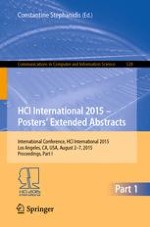2015 | OriginalPaper | Buchkapitel
Adaptive Depth Cue Adjustments of Interactive and Stereoscopic 3D Product Models for Design Education
verfasst von : Li-Chieh Chen, Po-Ying Chu, Yun-Maw Cheng
Erschienen in: HCI International 2015 - Posters’ Extended Abstracts
Verlag: Springer International Publishing
Aktivieren Sie unsere intelligente Suche, um passende Fachinhalte oder Patente zu finden.
Wählen Sie Textabschnitte aus um mit Künstlicher Intelligenz passenden Patente zu finden. powered by
Markieren Sie Textabschnitte, um KI-gestützt weitere passende Inhalte zu finden. powered by
